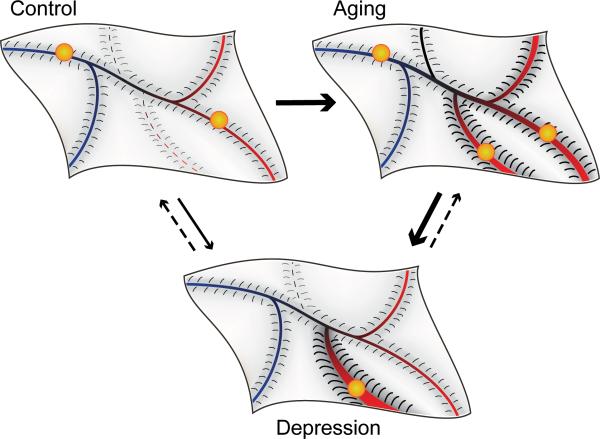Figure 3.
A canalization-decanalization representation of the Age-by-Disease Interaction hypothesis of LLD, and its putative effect on homeostatic states of a neural network underlying mood. This model allows for the visualization of how canalizing influences can interact to maintain normative biology, e.g. mood network function, and how decanalizing influences can lead to stable alternative, but sometimes maladaptive functioning, as for mood network dysregulation in clinical depression. Here, the normal variability over time in the functional state of the neural network underlying mood is represented by a ball, which can circulate along the canals of a model surface (or biological landscape), representing the repertoire of allowed physiological states (top left panel). Decanalizing influences lead the system away from the normative canal or affect the shape of the model surface such that canals representing alternative stable phenotypes are either made easier to enter into or formed de novo. In depression (bottom panel), decanalizing influences change the topography of the model surface such that it is easier for the “ball” to enter into existing or new canals representing alternative stable, but maladaptive, functioning of the neural network underlying mood and remain in those canals. Just as development and diseases can modify the topography or landscape of the model surface, so too does aging (top right panel). Because the biological processes disrupted in aging overlap to a significant degree with those recruited in a number of brain diseases including LLD, the areas of the model surface that change with aging are more likely to be those corresponding to disease states (red section of lansdscape). The result is that aging changes the topography of the brain biological landscape, leading to a shift in the repertoire of available physiological states in a pro-disease or LLD direction.

